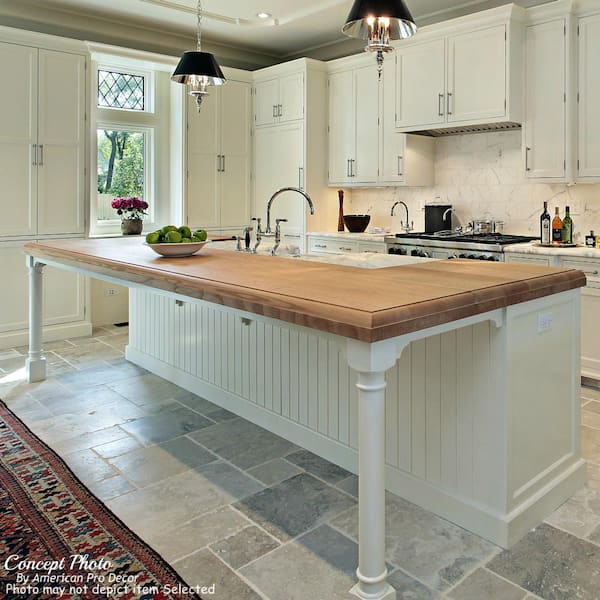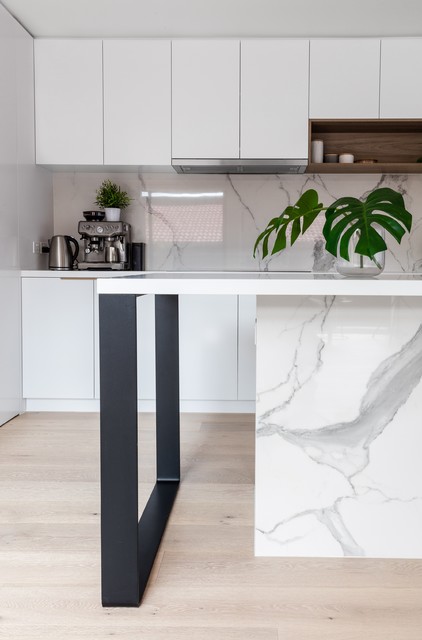The Value of a Sturdy Kitchen Island Leg in Producing a Useful Cooking Area
A strong cooking area island leg works as a fundamental component in establishing a practical food preparation setting, providing required assistance for both the countertop and various kitchen activities. The stability it provides can considerably decrease the danger of mishaps in high-traffic locations, while likewise adding to the total aesthetic coherence of the space. As kitchens evolve into multifunctional areas for food preparation, eating, and mingling, the option of products and style considerations for island legs ends up being progressively crucial. Comprehending these aspects can transform your kitchen right into a much safer and much more effective area, prompting more exploration into the most effective options available.
Benefits of Sturdy Island Legs
Providing important support, sturdy cooking area island legs play a crucial duty in improving the functionality and resilience of kitchen islands - kitchen island leg. These legs not just birth the weight of the kitchen counter and any type of extra products placed on the island, but also add to the general security of the structure. A well-supported kitchen area island guarantees that it stays functional and upright, even under hefty use, which is specifically vital in active cooking area atmospheres
Furthermore, durable island legs can boost the aesthetic appeal of the kitchen area. They provide a solid framework that can match numerous layout styles, from modern-day to traditional. This adaptability enables property owners to customize their kitchen islands according to personal taste while ensuring that the structural integrity continues to be uncompromised.
In addition to their encouraging function, durable cooking area island legs can likewise improve security. A stable island lowers the danger of crashes brought on by tipping or wobbling, which is particularly crucial in homes with kids or senior people. In addition, solid legs can facilitate a smooth flow of activities, allowing for efficient meal preparation and social communications within the kitchen area area. Inevitably, spending in tough cooking area island legs is vital for a practical and aesthetically pleasing cooking location.
Materials for Kitchen Area Island Legs
When selecting materials for kitchen island legs, sturdiness and visual appeal are crucial elements to consider,. The most typical products consist of wood, steel, and engineered wood, each offering distinct advantages.
Wood, such as cherry, oak, or maple, is a classic option because of its toughness and ageless elegance (kitchen island leg). It can withstand substantial weight and is immune to use, making it excellent for high-use cooking area environments. In addition, hardwood can be stained or painted to enhance different kitchen designs
Metal legs, typically crafted from stainless steel or wrought iron, give a commercial and contemporary look. They are incredibly strong and can sustain substantial tons while being immune to moisture and heat, which is useful in a cooking area. Metal legs can also be quickly cleaned up, boosting their practicality.

Layout Considerations for Stability
The option of products for kitchen island legs straight influences the style considerations for security. When creating a cooking area island, it is paramount to examine the weight-bearing capability of the chosen products. Heavier materials, such as solid wood or metal, generally give better stability, especially under the stress of day-to-day use.
Additionally, the leg design have to integrate appropriate geometry to improve stability. A wider base increases the assistance location, reducing the risk of tipping or tottering. Consideration should likewise be given to the elevation of the legs; disproportionate leg sizes can result in imbalance, jeopardizing the overall stability of the island.
Additionally, the distribution of weight across the island is critical. Guaranteeing that the leg positioning aligns with the heaviest parts, such as home appliances and countertops, will even more improve stability.
Upkeep Tips for Long Life

Cleansing is an additional important facet of maintenance. Depending upon the material of the legs-- whether wood, steel, or composite-- suitable cleaning techniques ought to be used. For wooden legs, a gentle clean with an appropriate timber and my sources a damp fabric cleaner will assist protect their finish. Steel legs may need a light gloss to avoid corrosion and preserve their radiance.
If the kitchen island experiences hefty usage, think about reinforcing the legs with added brackets or sustains to improve toughness. By following these upkeep ideas, homeowners can guarantee their kitchen island legs continue to be robust and functional for years to come.
Selecting the Right Leg Style
Routine maintenance makes sure that cooking area island legs continue to be functional and durable, however choosing the appropriate leg design is just as important for both visual appeals and assistance. The choice of leg style can substantially influence the general layout and consistency of your kitchen.

Functionality is one more essential aspect. Thicker legs or those with a sturdy base find more can sustain larger countertops and devices, enhancing the island's utility. On the other hand, slender legs may develop a ventilated appearance, appropriate for lighter layouts but potentially much less supportive.
Verdict
In summary, the value of strong kitchen area island legs can not be overemphasized in the development of a functional food preparation location. These legs supply vital support, boost stability, and add to the general aesthetic of the kitchen area.
A durable cooking area island leg serves as a fundamental part in establishing a useful cooking environment, supplying required assistance for both the counter top and various cooking area activities.Offering important support, tough kitchen area island legs play a critical duty in boosting the performance and longevity of cooking area islands. Inevitably, spending in tough cooking area island legs is crucial for a practical and visually pleasing cooking area.
Consideration should likewise be provided to the height of the legs; out of proportion leg sizes can lead to discrepancy, jeopardizing the overall security of the island.
Wood legs provide warmth and a traditional appearance, while metal legs offer a modern-day and commercial feeling.